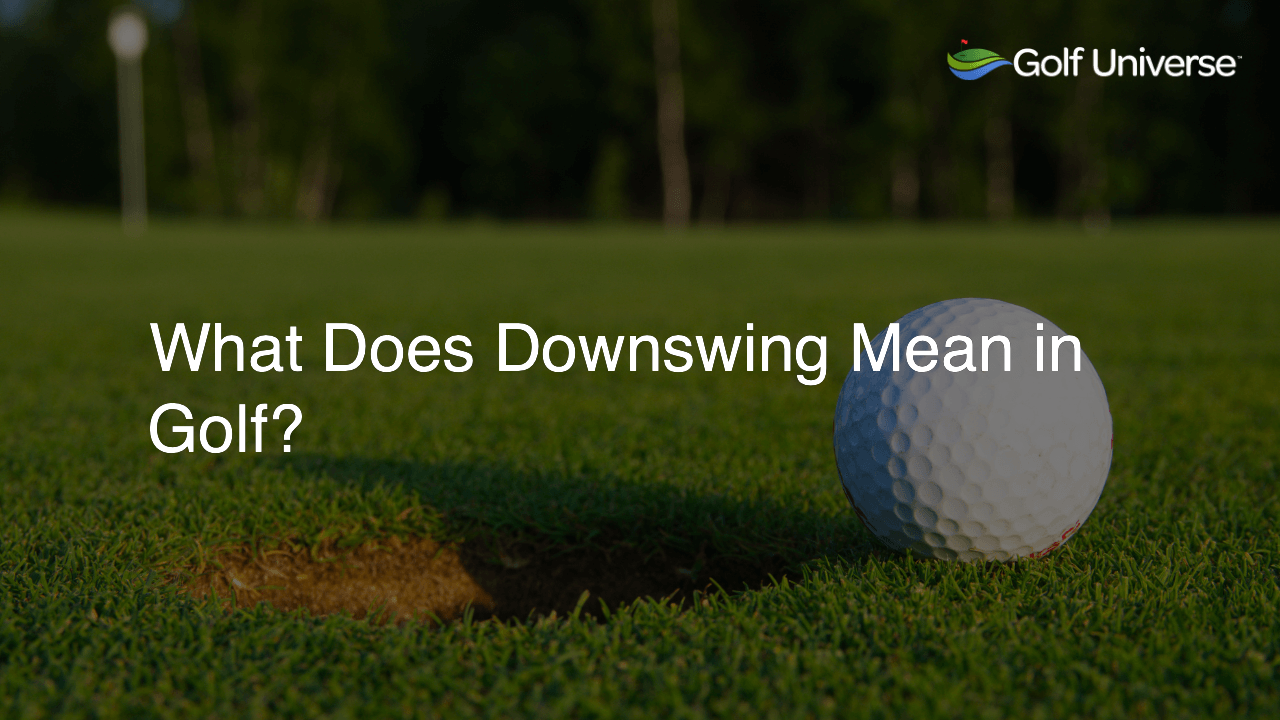In golf, the downswing refers to the part of the swing movement where the golfer brings the club from the top of the backswing down towards the ball, generating speed and power to make impact. This motion plays a critical role in achieving distance and accuracy in a golf shot.
Understanding the Downswing in Golf
The downswing in golf is a vital component of a player’s swing that starts from the top of the backswing and ends with the impact on the ball. Mastering the downswing is essential for achieving distance, ball flight control, and accuracy in a golf shot.
Importance of Downswing Timing
Proper timing of the downswing is crucial for maximizing clubhead speed and energy transfer to the ball. A well-timed downswing ensures that the golfer generates maximum power while maintaining balance and control throughout the swing.
Sequence of the Downswing
The downswing involves a precise sequence of movements, including:
- Shifting weight from the back foot to the front foot.
- Rotating hips and shoulders towards the target.
- Allowing the arms to drop into a “slot” position, where the club shaft stays on plane with the target line.
- Releasing the stored wrist hinge, which causes the clubface to square up at impact.
Common Downswing Mistakes
Several common mistakes can hinder the efficiency of a golfer’s downswing. Some of these errors include:
Overswinging
Overswinging occurs when a golfer tries to generate excessive power by extending the club too far back in the backswing. This can lead to a loss of control and an inconsistent downswing, affecting both accuracy and distance.
Overactive Upper Body
An overactive upper body during the downswing can cause a golfer to use the arms and shoulders too much, leading to mis-hits and loss of power. The golfer should focus on engaging the lower body and rotating the hips correctly.
Loss of Connection
A connected downswing is vital for consistency and power. Losing connection occurs when the arms move independently of the body, causing the club to get off-plane, resulting in poor ball-striking.
Improving the Downswing
To develop a consistent and powerful downswing, golfers should:
- Work on their timing and tempo to create a smooth, flowing sequence of movements.
- Focus on proper weight transfer and maintaining balance throughout the swing.
- Practice swinging with a connected motion, where the arms and body work in unison.
- Use training aids and take lessons with a qualified golf instructor to correct any downswing issues.
Increasing Consistency in Your Downswing
There’s no doubt that a consistent downswing is crucial for great ball-striking and scoring in golf. One of the key aspects of becoming a better golfer is understanding how to maintain a reliable downswing. Here at Golf Universe, we believe in the importance of practice and continuous improvement. By incorporating the tips provided in this blog post, you can significantly enhance your overall golf game.
Channel the Power of Mental Focus
Achieving a solid downswing isn’t just about physical technique; the mental aspect plays an essential role, too. Visualization and focused practice can significantly improve your downswing mechanics. Allow yourself to imagine the ideal downswing, then practice it diligently. Don’t forget to check out Golf Universe, a blog about golf, for more valuable insights and tips on mastering the mental side of the game.
Drills and Exercises
At Golf Universe, we recommend including purposeful drills and exercises in your practice routine to enhance your downswing. Some of those drills may involve:
- Swinging with a weighted club to develop more power and strength in your downswing.
- Using a resistance band or similar training aid to improve lower-body stability, balance, and hip rotation.
- Practicing the “pump drill” to foster a more connected and controlled downswing.
Integrating these drills into your practice sessions will help you become more aware of your downswing mechanics, ultimately leading to a better golf swing overall.
Expand Your Golf Universe
At Golf Universe, our aim is to provide valuable guidance and actionable advice that assists you in elevating your golf game. There are many nuances to mastering the downswing, and understanding its importance is the first step towards achieving a better golf experience. As you work on improving your downswing, remember to consult our blog for additional tips and insights designed to help you shine on the golf course!
Frequently Asked Questions
After reading our blog post on the downswing in golf, you might have some questions about how to improve your game further. To help you along, we’ve compiled the following FAQ section to address common concerns related to the downswing.
What causes a slice or hook during the downswing?
Slices and hooks during the downswing are primarily caused by an incorrect swing path and clubface angle at impact. If the clubface is open with an outside-to-inside swing path, it results in a slice. Conversely, if the clubface is closed with an inside-to-outside swing path, it leads to a hook.
How can I avoid casting or early release during my downswing?
To avoid casting or early release during the downswing, focus on maintaining the wrist hinge and lag throughout the swing. You can also practice drills like the “pump drill” to encourage a late release and more clubhead speed at impact.
What is the role of the hips in the downswing?
The hips play a crucial role in the downswing by initiating the lower body’s rotation towards the target before the upper body follows. This movement, known as the kinetic chain, contributes to generating power and maintaining balance throughout the swing.
How can I increase my clubhead speed during the downswing?
To increase clubhead speed during the downswing, work on proper sequencing, weight transfer, and rotation. Additionally, incorporate strength and flexibility exercises targeting your core and lower body to improve stability and generate more power.
What is the importance of the downswing plane in relation to the swing?
The downswing plane determines the path the clubhead takes during the downswing and has a significant impact on shot accuracy and distance. Maintaining a consistent downswing plane helps ensure solid contact and a straighter ball flight.











